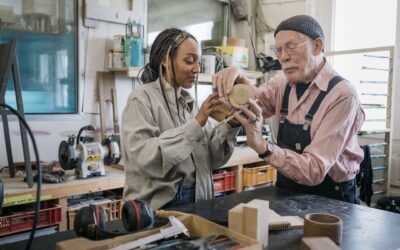
How a second-opinion market study helped us shift from a high-risk project with sleepless nights to a right-sized plan with peace of mind
Like so many single-site Life Plan Communities back in 2018–2019, we were trying hard to add independent living to our campus. The goal? Improve our financial position and modernize a campus that was clearly due for an update.
The Dream: A 175-Unit Tower Across the Street
We’re a landlocked community in downtown Orlando, so when we had a chance to grab some property across the street, we jumped on it. It looked like the perfect spot for a new 175-unit independent living tower. Yes, that size felt ambitious, but the demographic data seemed to back it up. So, we pushed ahead—full speed.
Even when COVID hit, we kept the momentum going. Things slowed a little, sure, but we had a team in place and we were all still committed to the plan.
Then, Everything Changed
Then came the curveball: The property across the street unexpectedly went off the market. Suddenly, our big expansion lost its home. But we still needed those units to stay financially viable—so we pivoted.
With no other land available, we made the bold decision to replace our existing skilled nursing tower with the new independent living tower. To give you an idea of what that meant, our nursing tower had 168 beds and accounted for 75% of our bottom line.
A Financial Reality Check
It was already a difficult decision, and then things got harder. Financially, the pandemic caught up to us. Relief funds had kept us afloat, but once they dried up, the reality hit: We no longer had the money for a massive expansion.
Still, the need for independent living hadn’t gone away.
The Questions That Kept Us Up at Night
Adding new units wasn’t the whole story. Our existing buildings and amenities were aging, and we knew if we introduced a brand-new tower without updating the rest of the campus, the contrast would be too stark. The product gap between old and new would be jarring.
So with our main source of revenue on the chopping block, we were left asking:
- What do we tackle first?
- Can we even support 175 units?
- How competitive is our pricing?
- Do we have the funding?
We knew we had to get this right.
Bringing in a Fresh Perspective
At that point, we decided to take a step back and reevaluate everything. That’s when we brought in Love & Company senior living professionals for a new comprehensive market study. I’ve followed their work for a while and appreciated the fresh innovative insights they share within the senior living field.
Let me just say—they did not disappoint.
We asked them to evaluate two things:
- How many units could our market realistically support?
- What pricing would the market bear?
We were especially concerned that our pricing might be off, and we weren’t confident in how we stacked up against our competition.
A Reality Check We Needed
What stood out about Love & Company’s analysis is that they went far beyond just running numbers. They visited our competitors, toured the communities and gave us insight not only into pricing and demographics, but also into the feeling prospective residents get when they walk through each community—including ours.
Their findings?
- Our market could support 130 units, not 175. That felt much more realistic.
- Our pricing was too high, especially when compared to newer, more polished competitors.
And honestly, that all made sense to us. Deep down, we’d already suspected it.
Making the Most of the Findings
Based on Love & Company’s market study, we didn’t just adjust the expansion plan — we used it to guide a full campus strategy. Based on the recommendations, we’re now:
- Preparing for a $15–$20 million bond to fund both the expansion and much-needed campus upgrades
- Using the study results, with its detailed product score cards, to guide our decisions in how we’re renovating our existing buildings inside and out, and even with our programming
- Incorporating the recommendation in the design on the new tower
Lessons Learned
If you’re considering a major expansion, here are my biggest pieces of advice:
- Trust your instincts—and get a second opinion. Yes, your partners want to move the project forward, but at the end of the day, you’re the one left holding the bag if things don’t go as planned. For us, the original study didn’t capture the full market picture, especially when it came to how our product and pricing really compared.
- Get market analysis that goes beyond just pulling demographic and financial information. Love & Company visited our competitors and did a detailed comparison, even down to the feeling our target prospects get when they visit. For us, that level of analysis made all the difference.
Once we had a more thorough, boots-on-the-ground analysis, everything clicked. Now, we can move forward with clarity—and peace of mind. Based on the clarity of this study, our board feels the same way.
Final Thought
If you’re considering a major expansion, take the time to get it right. The right data, the right in-market data collection and the right partner can make all the difference. For us, that partner is Love & Company.




